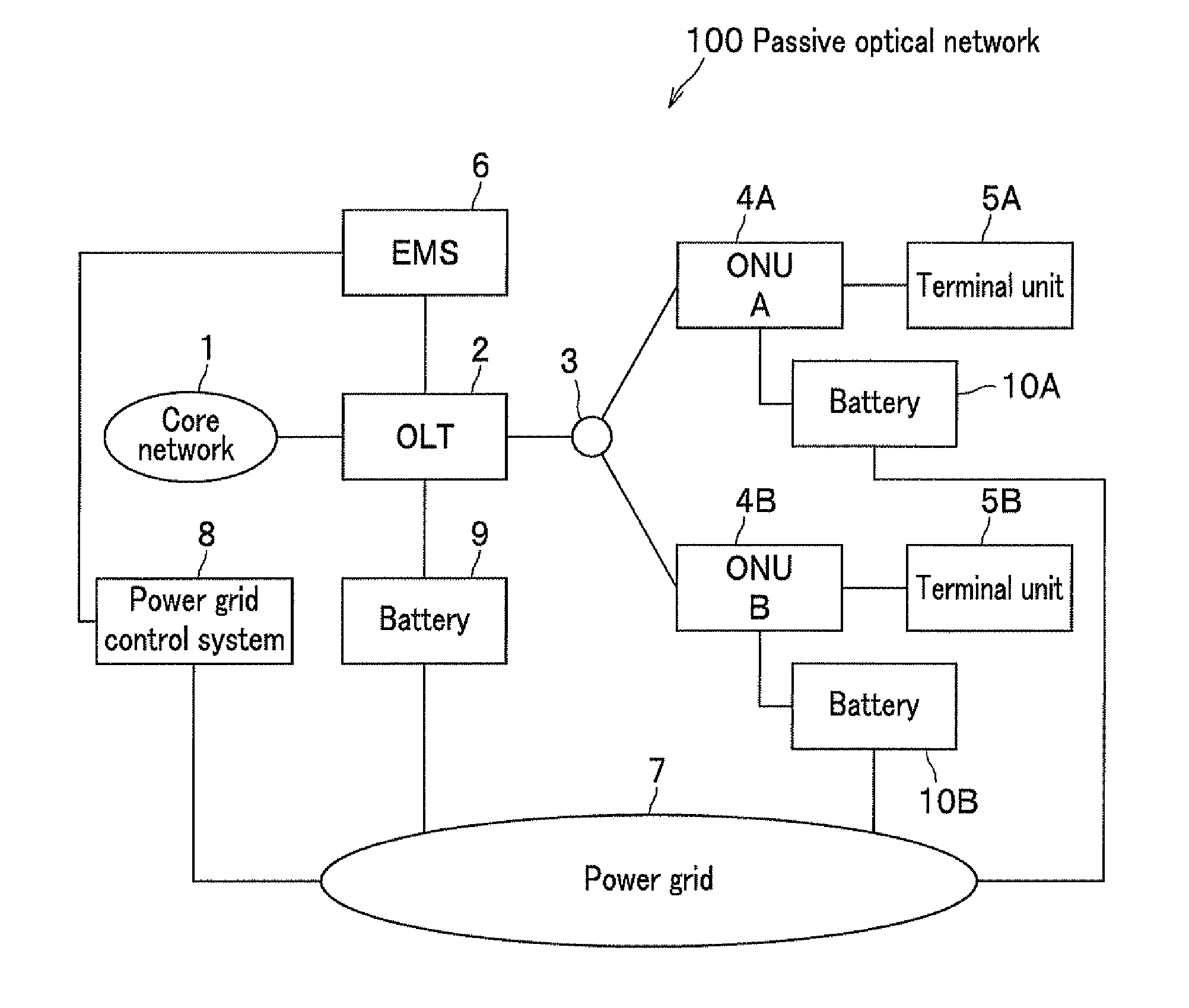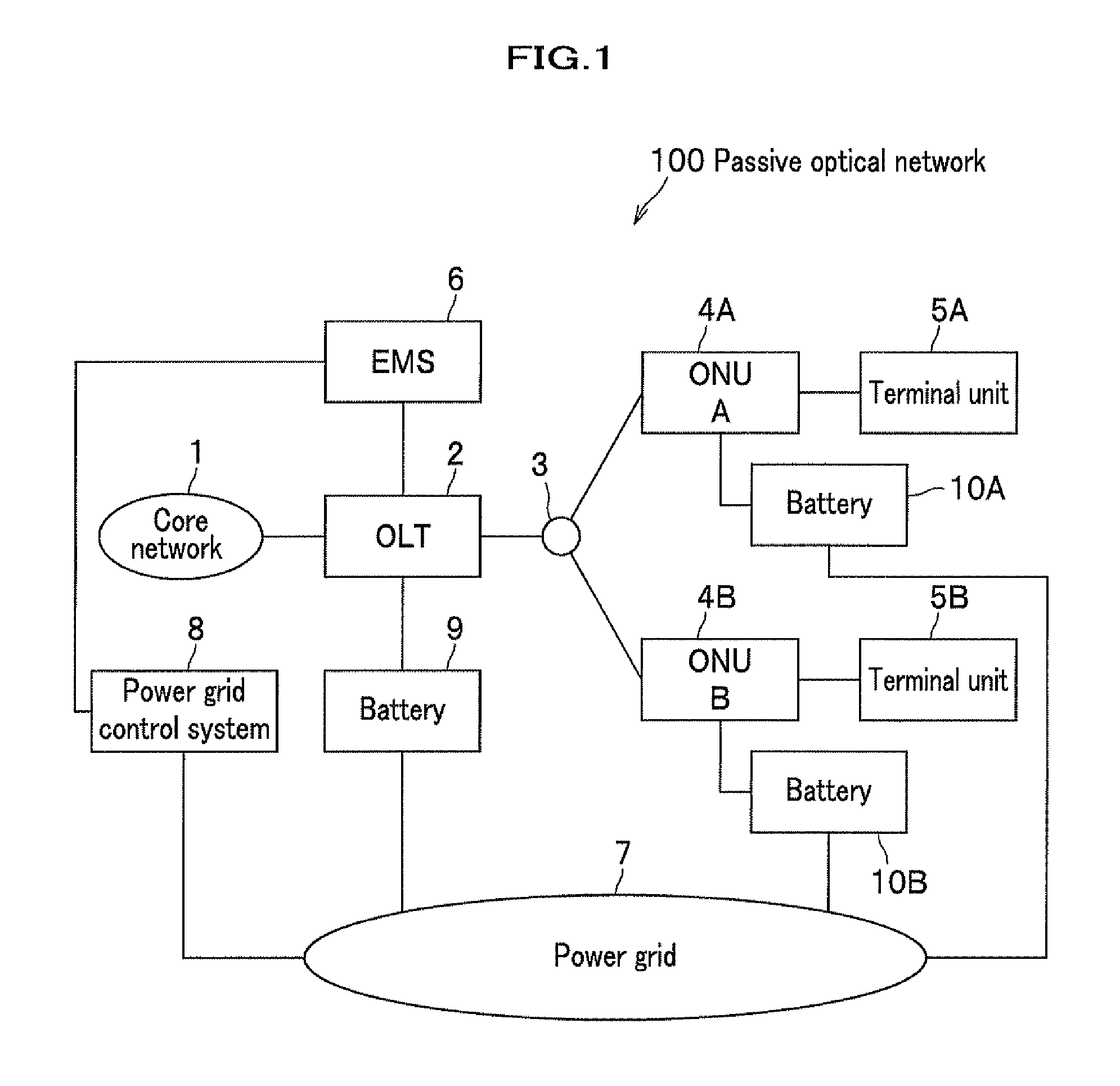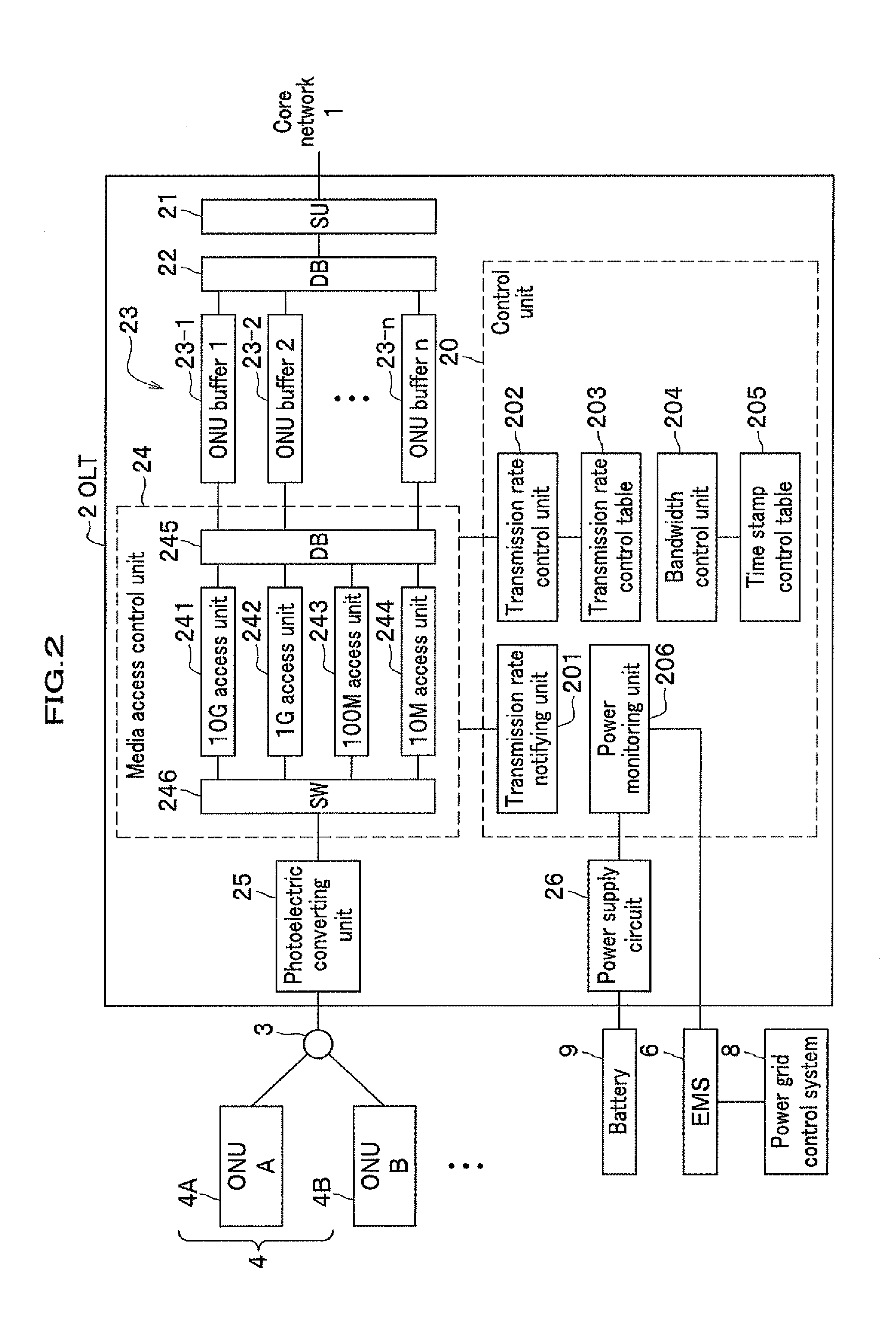Passive optical network system, optical line terminal, and optical network unit
a technology of optical network and optical line terminal, which is applied in the direction of time-division optical multiplex system, electrical apparatus, electromagnetic network arrangement, etc., can solve the problems of inability to maintain equipment operation, lack of electric power supply capacity for operating optical access transmission equipment, and large power consumption of relay units on the transmission path. , to achieve the effect of reducing power consumption, reducing transmission rate, and reducing communication
- Summary
- Abstract
- Description
- Claims
- Application Information
AI Technical Summary
Benefits of technology
Problems solved by technology
Method used
Image
Examples
Embodiment Construction
[0047]With reference to drawings will be described embodiments of the present invention.
[0048]In this embodiment, the Ethernet Passive Optical Network (EPON) system defined in IEEE802.3 standard is exemplified. However, the present invention is readily applied to other passive optical network (hereinafter referred to as PON) having a different transmission rate (speed), such a Gigabit Capable PON (GPON) defined by ITU-T Recommendation G.984 series, XGPON (10G PON) defined by ITU-T Recommendation G.987 series.
[0049]FIG. 1 is a block diagram of a passive optical network (PON) system according to the present invention to show a network configuration example.
[0050]A passive optical network (PON) system 100 includes an optical line terminal (OLT) 2 and optical network units (ONU) 4 (4A, 4B) connected to the OLT 2 through optical fibers via an optical splitter 3. The OLT 2 is connected to a core network 1. Terminal units 5 (5A, 5B) are connected to the ONUs 4 (4A, 4B), respectively. In FI...
PUM
 Login to View More
Login to View More Abstract
Description
Claims
Application Information
 Login to View More
Login to View More - R&D
- Intellectual Property
- Life Sciences
- Materials
- Tech Scout
- Unparalleled Data Quality
- Higher Quality Content
- 60% Fewer Hallucinations
Browse by: Latest US Patents, China's latest patents, Technical Efficacy Thesaurus, Application Domain, Technology Topic, Popular Technical Reports.
© 2025 PatSnap. All rights reserved.Legal|Privacy policy|Modern Slavery Act Transparency Statement|Sitemap|About US| Contact US: help@patsnap.com



